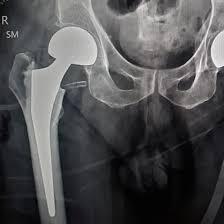Fill out form to enquire now
MRI Screening Of Right Hip
Medintu has collaborated with the best pathology laboratories that are NABL and NABH certified and follow ISO safety guidelines to provide the best MRI Screening Of Right Hip at an affordable price for needy individuals. The right hip is one of the most intricate articulations that mainly provides support to your body weight and facilitates your movement. I could also note that for walking, running or even standing the hip joint plays an important role in the mobility and functionality of the human body. However, there are several possible causes of hip pain, limitation of movement and stiffness in this joint. When other methods such as x-ray fail to give sufficient detail, an MRI scan of the right hip is the essential tool needed for treating several conditions. MRI is one of the safe imaging techniques, which passes powerful magnetic fields and radio waves through the body in order to provide the detailed images of the hip bones, soft tissues and cartilage that are surrounding the joint.
MRI is especially useful in conditions of the soft tissues like ligaments, tendons, muscles and cartilage since they are not clearly distinguished by normal X-rays. They can diagnose injuries such as labral tears, tendinitis, bursitis, stress fractures, arthritis, avascular necrosis and other ones. This particular form of imaging has the following features; it does not use any radiation, has the ability to produce very high resolution images and is used to diagnose problems in their early stages before they get to some serious stage that will require intervention from a surgeon. MRI of the right hip assists physicians in making correct assessment, management and if required, surgical intervention. To schedule an appointment for a MRI Screening Of Right Hip, simply contact Medintu or call our customer care at +919100907036 or +919100907622 for more details and queries.
What is MRI for the Right Hip?
MRI of right hip is a functional imaging modality that applies powerful magnetic fields and radiowave energy to obtain high spatial resolution images of the right hip joint and the surrounding soft tissues such as the osseous structures, articular cartilage, muscles, tendons, ligaments and related “soft tissues”. MRI means Magnetic Resonance Imaging which is a non-invasive technique which is widely used to diagnose and evaluate hip disorders, injuries and diseases. However, being in the MRI category also has several advantages that places it over X-rays or CT scans; the first being that MRI does not use ionising radiation meaning that patients who are likely to require frequent scans are safe with MRI. That is why it remains an essential imaging test useful in diagnosing conditions affecting soft tissues that cannot be seen when using other tests like CT scans or MRIs. MRI scans of the right hip brings different structures of the hip joint into view to show different conditions or injuries that include fractures, tendon tears, arthritis, labral tears, bursitis and soft tissue damage. The procedure is most beneficial in cases of cartilage (a smooth, slippery tissue that covers bones), ligament (fibrous connective tissues that bind joints), tendon (fibrous connective tissues that connect muscles to bones, and muscles.
Why is MRI Screening for the Right Hip Performed?
MRI scan of right hip is done for a range of hip pathology, the articulation and its soft tissue and bony surrounding structures. Here are some of the key reasons why MRI screening for the right hip is performed:
- Hip pain that lasts or recurs after a fall, auto accident or being hit by a car, is severe, gets worse as the day progresses, or does not improve with rest or anti-inflammatory medication.
Anyone who has chronic hip pain for which they could not get relief through interventions such as by resting, applying heat, seeing a physical therapist, and taking pain medication may require an MRI. MRI aids in an outstanding manner in relating problems which may be associated with bones and soft tissue that might be causing chronic pain.
- Hip Injuries or Trauma
After hip joint trauma, like a fracture, surgery, or a sports craze mishap, such as a car accident, MRI will indicate signs of injury. It can see fractures, avulsion of ligaments or tendons and other injuries in muscles and other body tissues that are not visible in simple radiographies. This directs the care provider in identifying the severity of the injury and how the further care shall be directed.
- Detection of Labral Tears
Labral tears relate to the lining (labrum) of the hip joint that serves to anchor the femur on the acetabulum. These injuries usually result in groin ache, hip crepitus or ‘catching’, and problems with specific activities. MRI with or without weightings and especially with contrast enhancement is very appropriate for demonstrating labral tears.
- Evaluation of Hip Bursitis
Hip bursitis is a medical condition that develops when the hip bursae—the fluid-filled cushion that is located in between the bones—swells up. The aggravated area can lead to either soreness and growth at the joint area especially when in use. MRI can be a great diagnostic tool in evaluating for bursitis because it allows the assessment of inflammation in the bursa.
- Degenerative Osteoarthritis and Cartilage Disease
Osteoarthritis is a common disease of the joints and may lead to the wearing out of the cartilage in the hip joint. This aspect makes MRI a valuable aid in the diagnosis of OA even before the structural alterations in the bone are manifest on radiographs. MRI is useful identifying cartilage loss, narrowing joint space, and inflammation causing arthritis.
- Hip Fractures
While fractures are most commonly diagnosed using X Ray the following are difficult to visualize with X Ray but can be seen using MRI: stress fracture or fracture of femoral head or neck. MRI happens to be very useful in detecting small or hairline fractures that might not be detected by other imaging techniques.
Conditions Detected by MRI of the Right Hip
MRI scan of the right hip is a very useful investigation, which aids in the visualization of bones, cartilage, muscles, tendons and ligaments in and around the hip joint. Here are some of the most common conditions that MRI can detect in the right hip:
- Hip Fractures
Stress Fractures: Micro fractures that are generally not noticeable on X-ray due to their small size may result from excessive wear and tear, and may be diagnosed through MRI. This is especially when one is an athlete or anybody that is physically active in a day to day undertakings.
Femoral Head/Neck Fractures: While simple [XXXX] are inconspicuous on an X-ray, particularly if they are located at the head of the femur close to the hip joint, MRI will show the pathology plainly.
- Labral Tears
The labrum is cartilage that extends around the hip socket or acetabulum and acts as a cushion and stabilizer of the joint. Chronic midanterior labral injuries result from trauma, microtrauma, labral noises, hip impingement, or snapping hip. They include pain, catching or snapping, or clicking in the hip. MRI is very accurate in diagnosing tears in the labrum, more especially with the use of contrast agents.
- Osteoarthritis
OA is a chronic joint disorder specified with progressive breakdown of cartilage occurring in the hip joint. MRI is particularly helpful in diagnosing early osteoarthritis referring to cartilage loss, joint space shrinkage, bone formation on the joint margin, and inflammation. X-rays are also insensitive to soft tissues, but MRI is especially valuable in determining the state of the articular cartilage which is nearly invisible on X-Rays.
- Tendon Injuries and Tendonitis
Tendonitis: Inflammation of the tendons around the hip, which may be caused by overuse and repetitive stress, is MRI-visible. This is usually seen in situations where there is injury to tendons like hip flexor tendonitis or glutael tendonitis.
Tendon Tears: MRI is also very useful for identifying whether a hip tendon, including iliopsoas or gluteal tendon, is partially or fully torn, since the tears often lead to pain and impaired movement.
- Bursitis
Bursitis refers to the swelling of the bursae which are tiny pouches containing fluid that protect the hip joint. There are two major bursae in the hip; the iliopsoas bursa, which is located behind the iliopsoas muscle and the trochanteric bursa, which is located over the greater trochanter. MRI can demonstrate the signs of inflammation or swelling within these structures as such may cause hip pain especially when pressure or movement is applied.
Benefits of MRI for the Right Hip
MRI is very useful in diagnostics, especially when defining conditions influencing the rightsided joint of the hip. It opens up several clear advantages over other types of imaging procedures like X-ray or CT scan. Here are the key benefits of MRI for the right hip:
- No Radiation Exposure
Safe for Frequent Use: MRI is different from x-rays, or even CT scans in that it employs magnetic field and radio waves in the production of the images. This makes MRI safer for patients who will need multiple imaging or the young patients who are more vulnerable to the effects of radiation.
Ideal for Pregnant Women: MRI is believed to be safe in pregnancy especially if the imaging is required due to high risk and benefit to the unborn baby therefore it’s highly recommended when hip assessment of an expectant woman is required.
- Detailed Soft Tissue Imaging
Exceptional Clarity of Soft Tissues: MRI is very useful in imaging of soft tissues including muscles, tendons, ligaments, cartilage and hip labrum. These tissues are not visible in X-rays or CT scans and therefore if there is an injury or pathologies affecting soft tissues around the hip joint, MRI is widely used for their diagnosis.
Visualizing Cartilage and Ligament Damage: MRI can also pick out early cartilage injury, a torn hip labral tear or ligament/tendon strain, which are usually the main sources of hip pain that other scans cannot detect.
- Defining the Diseases – Proving the Complexity
Identifying Multiple Hip Conditions: MRI is beneficial in evaluating hip injuries because the technology is sensitive to a variety of hip injuries including fractures, labral tears, osteoarthritis, tendonitis bursitis, infections and tumors. This is because it is capable of producing real images of bones and tissue hence giving a detailed diagnosis.
Early Detection: MRI is accurate enough to help diagnosing early stage diseases like avascular necrosis, femoroacetabular impingement, or chondral lesions before they develop into complex cases.
- Non-Invasive Procedure
Painless and Non-Invasive: MRI for the hip is a painless test that does not cause any damage to internal tissues or organs (apart from the contrast agent if administered). When combined with other procedures, such as with CT scans, it is almost entirely painless, though you may feel uncomfortable from being confined inside an MRI machine for some time.
No Need for Recovery Time: MRI does not pose any post-scan suffering as some diagnostic procedures or surgical operations may do, meaning that patients can go back to their everyday business after MRI.
- Remarks on the Similarities of Hip cartilages and Its surrounding structures
Bone and Soft Tissue Imaging: MRI generates detailed and contrast images between bones and soft tissue and provides a panoramic view of hip joint AC. The MRI provides the detailed vision needed to spot features such as minor cartilage damage or a torn tendon, for instance, which cannot be detected with X-ray.
3D Imaging Capabilities: MRI can provide further images in more layers and sectional avenues which can be good when imaging the hip joint in a different perspective. It is particularly helpful when evaluating high levels of injury or conditions such as hip impingement or tears of labral tissue.
- Test Type: MRI Screening Of Right Hip
- Preparation:
- Wear a loose-fitting cloth
- Fasting not required
- Carry Your ID Proof
- Prescription is mandatory for patients with a doctor’s sign, stamp, with DMC/HMC number; as per PC-PNDT Act
- Reports Time: With in 4-6 hours
- Test Price: Rs.4000
How can I book an appointment for a MRI Screening Of Right Hip through Medintu?
To schedule an appointment for a MRI Screening Of Right Hip, simply contact Medintu or call our customer care at +919100907036 or +919100907622 for more details and queries.
What is an MRI for the right hip?
MRI for the right hip is a method of examination in which no actual invasion of the body is involved and is a scan that makes use of magnetic field and radio waves to get pictures of the bones, muscles and other tissues in the hip joint. MRI is employed in the identification of a number of disorders affecting the hip, including labral tears, arthritis, fractures, and tendon disorders.
Does the MRI of the right hip cause pain?
However, the MRI do not cause pain, it is a non invasive procedure where you are put inside a big machine with very strong magnets. Nevertheless, wearing the same prostheses, during the procedure, you will need to lie still, inside the MRI, for about 20-45 minutes, which, depending on your ability to keep still and the presence of hip pain, can be uncomfortable.
Am I ready for the MRI right hip?
Specifically in regard to MRI of right hip, More often, the patient does not need to prepare for the MRI test. However, you may be requested to get rid of anything containing metal including but not limited to ornaments, dresses with metallic zippers, hair clips, etc. If you are claustrophobic, let the technician know, they may suggest breathing exercises and in some cases even give you a mild tranquilizer.
Are there any risks associated with MRI for the right hip?
MRI is by all accounts known to be safe. However, there are a few precautions to keep in mind:
- Metal Implants: Certain metals in the body such as implants or cemented prostheses, pacemakers as well as other devices need to be declared to the medical team to avoid interference from the strong magnetic field.
- Claustrophobia: It may be uncomfortable for some patient due to space confinements of the MRI machine Some patients may also feel anxious while inside the MRI machine. If this might be a problem, you should discuss this with your doctor before arranging an MRI appointment.
- Contrast Dye Allergies: However, if the contrast material is essential in order to improve the images, there exists a possibility of allergic reactions. In any case, it is always wise to allow your doctor to know that you have always had allergies to the contrast agents.
How long does it take to complete an MRI of the right hip?
An MRI of the right hip usually lasts between 20 to 45 minutes. And the nature of the scan that may be needed to determine your condition, whether contrast is used will determine the exact time.
What diseases can an MRI of the right hip identify?
MRI can detect a wide range of conditions affecting the hip joint, including:
- Labral tears
- Other fractures such as stress fractures.
- Especially OA of the knee joint and cartilage wear.
- Tendonitis and tendon ruptures for example hip flexor tendonitis
- Bursitis
- Femoroacetabular osteoach: impingement
- Avascular necrosis or bone infarction refers to death of the bone due to interruption of blood supply.
- Benign and malignant soft tissue tumours and infection
- Effusion of the hip joint (fluid accumulates in the joint).
Can MRI detect hip fractures?
Indeed, MRI is very effective for the detection of hip fractures, including stress fractures and minor fractures that may be poorly seen on simple radiography. Specifically, MRI has been found effective for evaluation for femoral head or neck fractures that are important for diagnosis and management.
Why Choose Medintu for MRI Screening Of Right Hip?
Medintu is an online medical consultant that provides home-based medical services not only in your area but also in most cities in India, including Hyderabad, Chennai, Mumbai, Kolkata, and more. We have collaborated with diagnostic centers that have the best machines and equipment to ensure you get accurate results. Medintu provides 24-hour customer service for booking the appointment of the services and guides you with instructions. Medintu also provides the best diagnostic centers at low prices. Once you receive your test results, you can easily book an appointment with our network of experienced doctors for consultation. To schedule an appointment for a MRI Screening Of Right Hip, simply contact Medintu or call our customer care at +919100907036 or +919100907622 for more details and queries.





